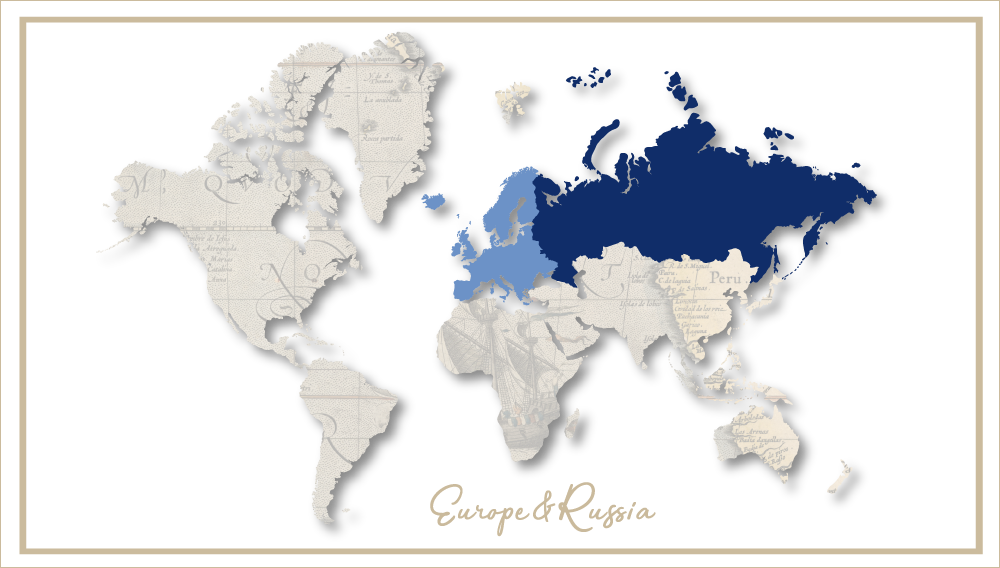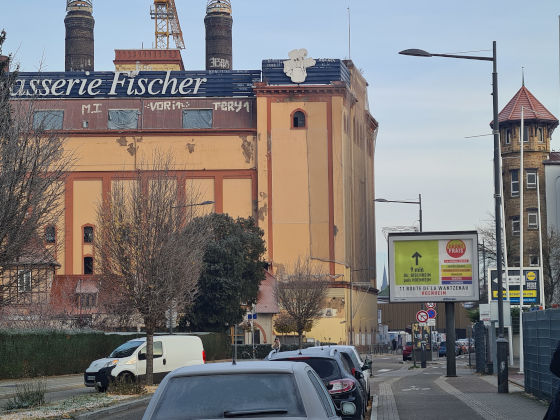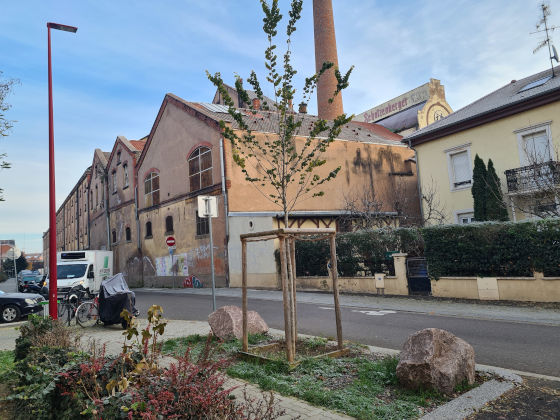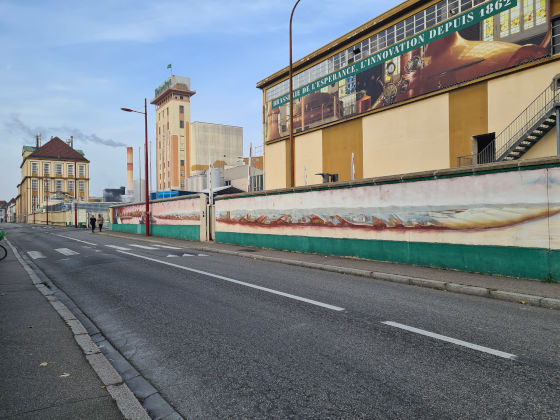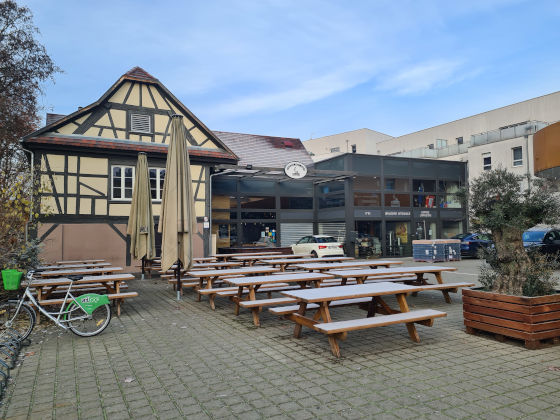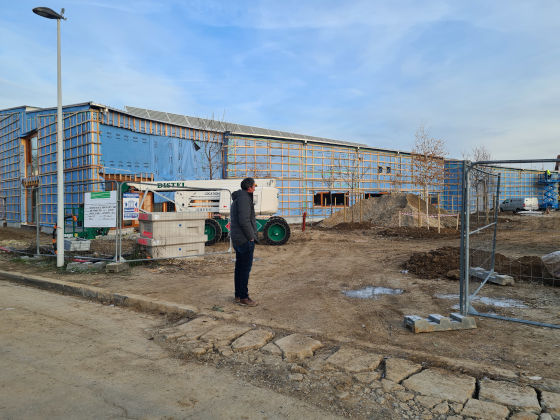Heineken’s closure of its Schiltigheim brewery could prove a challenge
France | When Heineken announced the closure of its Alsatian brewery in November 2022, and the loss of more than 200 jobs, many observers pretended the decision came out of the blue.
In fact, Heineken had already let go of 80 employees in 2021, Brauwelt International was told, which suggests the writing had been on the wall for quite some time.
Heineken said that the process of closing the brewery could drag on for up to three years. That seems like a long time. But it is entirely feasible, as Heineken will first need to agree on a social plan (“Accord de Méthode”) with its employees.
Employees are fighting for their livelihoods
Talks between Heineken and employee representatives began in December. As if to underline that they will not be had over a barrel, employees began picketing the brewery after the New Year, thus preventing beer production from being resumed after the year-end downtime.
It is highly likely that Heineken will come to an agreement with its employees before it has fulfilled its other obligation – finding a buyer for its brewery with a capacity of some 1.5 million hl beer. In a process supervised by the state (that is the local prefecture), Heineken will initially approach potential buyers from the brewing industry and, failing that, from the beverage industry at large. The prefecture may also decide to chip in some money, if it can thus win over a buyer for the brewery and its 11 ha of real estate.
Schiltigheim’s beer festival hangs in the balance
Many observers wonder what will become of Schiltigheim’s annual beer festival, held in August, once Heineken departs for good. The statutes of the hugely popular festival (30,000 visitors on a weekend) say that only local breweries can take part. The Storig brewpub, established by the late Michel Debus on the grounds of the former Adelshoffen brewery, will be the last remaining brewery in Schiltigheim and probably incapable of organising such an event.
The future of the Fischer brand
Observers also wonder what Heineken plans to do about the Fischer brand. The brand is owned by Heineken, following the purchase (1996) and closure (2009) of the Fischer brewery. To continue sporting the seal of “brewed in Alsace” Heineken may have to find a local contract brewer.
Alternatively, Heineken could dispense with the seal altogether, and brew the estimated 60,000 hl of Fischer’s low margin beers at its other breweries in France. The risk of seeing the Fischer’s sales volume decline in the local market is probably manageable, considering that Heineken leads the French beer market in terms of value, ahead of Carlsberg’s brewery Kronenbourg (7 million hl in annual beer production), which leads the market in terms of volume.
Presently, the back label of a Fischer beer bottle claims (translated): “We brew our Fischer beer in Alsace, as it has been done for 200 years, and this will only change when the storks grow teeth.” This means never. But then again, paper does not blush.
If no beer industry buyer for the Heineken brewery can be found, the contribution of Alsace to France’s beer production (20 million hl in total) will drop to below 50 percent, with two breweries – Kronenbourg and the Brasserie Saverne – providing the bulk of it. There are currently some 100 craft breweries in Alsace, out of perhaps 2,500 craft breweries across France.
Schiltigheim – a city of ghosts
Once Heineken ceases production and exits Schiltigheim, the town to the north of Strasbourg could sport yet another brewery ruin. The good old days - the 1960s and 1970s, when breweries in Alsace churned out more than 70 percent of France’s beer output (roughly 10 million hl then) and Schiltigheim was its beer capital - are long gone. Between 1960 and 2009, the number of breweries in Alsace dropped to four, from previously 22, following a wave of mergers and closures.
In December 2022, when I visited Schiltigheim, I was struck by the discrepancy between Schiltigheim’s past and present. Originally, the town was designed as an industrial hub at a fair distance from Strasbourg. Most of its major breweries were lined up along Schiltigheim’s major thoroughfare, the Route de Bischwiller.
Approaching Schiltigheim from the south, you first see the Fischer brewery (formerly 1.8 million hl, locals say), or rather its bulky malthouse guarding the entrance to the town. The malthouse is a listed building, for which no alternative use has been found yet. Most of the brewery’s buildings have been knocked down since 2009 and replaced by blocks of flats. Across the street, there are the listed remains of the Charles Kleinknecht brewery, which eventually became part of the Perle brewery.
Perle gone and Schutzenberger abandoned
Further north stood the Perle brewery, whose only trace is a side street called Rue Perle. Its grounds have been redeveloped twice since the 1970s, when it was demolished. The Perle brewery sat back-to-back with the Schutzenberger brewery (once 800,000 hl), which was shuttered in 2006, and whose site has since been bought by a property developer from Strasbourg. Most of the buildings appear empty and unused.
Continuing north, the large Brasserie de L’Espérance Heineken, as it is called, looms large at the Route de Bischwiller crossing with Rue St Charles. At its peak the Brasserie de L’Espérance produced more than 2 million hl beer annually.
And finally, there is the swish brewpub by the name of Storig, built by the inventor of Desperados beer, Michel Debus (he died in October 2022 aged 95), and incorporating some of the remains of the former Adelshoffen brewery. Adelshoffen used to be a 1 million hl plant.
Think Dortmund on the Ill
There is little left of Schiltigheim’s glorious past – except a few academic articles and photographs. However, this seems to be the way of the world. Older folks may associate brewing heritage with a locality, and will bemoan the disappearance of brands and their physical homes. But as we have all learnt, punters do drink the label and often care very little where a beer is being produced - for as long as there is a story of origin to tell.
As I walked around Schiltigheim, I was reminded of the German city of Dortmund, home of the eponymous beer style Dortmunder Export, whose breweries once vied with Munich and Berlin for the title of German beer capital. Most of its eight large breweries sat bang in the middle of the city.
I would harbour the guess that many German beer punters will not know that all the breweries which once made Dortmund famous, have long disappeared. In fact, all that is left of Dortmund’s brewing heritage is the tower of the Dortmunder Union brewery, topped by a gigantic U, which nowadays serves as the city’s landmark.
The new Perle brewery
Back in Schiltigheim, I was pleased to learn that Christian Artzner, a craft brewer, famous for mixing beer and grapes, and a direct descendant of the Artzner family (it used to own the old Perle brewery), is going to open a new Perle brewery in 2023, in the Strasbourg borough of Cronenbourg, directly to the west of Schiltigheim.
Mr Artzner founded his Perle brewery in 2009, but having outgrown the current site in the south of Strasbourg, he chose to build a larger, 10,000 hl brewery with a taproom and beer garden right next to a famous steak restaurant (named “Restaurant by the Slaughterhouse” as a matter of fact) and the Strasbourg outlet of IKEA. The new brewhouse will be installed in March and the venue will be fully open in the spring.
Keywords
brewing industry France Europe company news product news
Authors
Ina Verstl
Source
BRAUWELT International 2023

